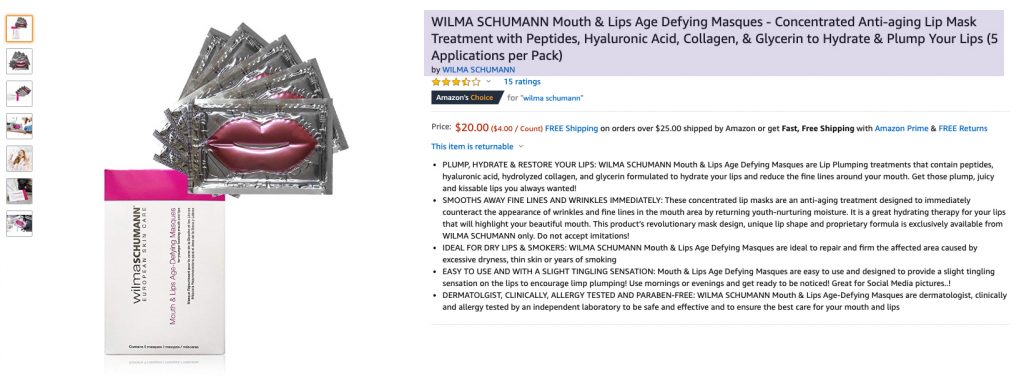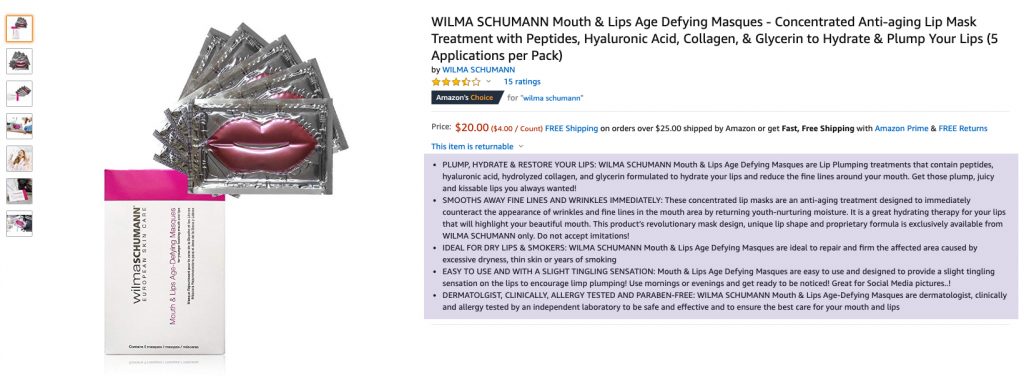
The Importance of Having Optimized Listings on Amazon
Scenario: Upon hearing about how great Amazon is, you have decided to sell your products on the biggest marketplace in the world. You have created your Amazon seller account, and then managed to set up your first listings.
A few weeks have passed, and you still haven’t made a single sale.
You checked your available data and noticed that there is little to no traffic that is coming to your listing. What is possibly wrong with your product page?
It is highly-likely that you are doing Amazon optimization incorrectly – or you are disregarding it.
That is a big mistake you should stop doing right now. Failure to optimize in Amazon will only lead to less traffic and fewer sales.
That said, it is time you learn and pay more attention to optimizing your Amazon listings.
What Is Amazon Optimization?
Amazon optimization is the practice of driving traffic to a listing from Amazon’s organic rankings. It involves optimizing listings around highly-searched and relevant keywords with the end-goal of generating more sales.
In simpler terms, Amazon optimization is all about improving a listing’s rankings so it would appear organically in the top spots of the search results. In that sense, it works much like the typical search engine optimization (SEO). Hence, Amazon optimization is otherwise known as Amazon SEO.
The main benefit of ranking on Amazon is that you can get free traffic to your listing.

Why Amazon Optimization Is Important?
An Amazon listing can have a great copy, beautiful images, and the proper call to action, just like when you create an amazing landing page on a website. But without anyone visiting it, you cannot make a sale despite how great the listing is.
That is why you need to optimize the listing on Amazon.
For instance, you are selling diapers online. You have created a listing, adding a product title, description, some images, and other information to make lots of sale.
However, you are not the only one selling diapers online. There are hundreds of companies out there selling a similar item as you, which makes the competition stiff. So, what should you do? You have to optimize your listing to get ahead of the competition.
When you properly optimize a listing, it helps you rank higher on the Amazon search engine page. This increases your chance of getting found online, resulting in getting more traffic and eventually, leading to more sales.
On the contrary, if you do not fully optimize, your listing will not appear to your potential customer.
Important Amazon Optimization Stats
Here, we bring together relevant stats you need to know to emphasize the importance of Amazon optimization.
- Over 55% of all product searches start on Amazon. (Bloomreach)
What it means for you: That is a great opportunity for you to sell your product on Amazon. Take advantage of the platform through a proper Amazon optimization strategy.
- As of April 2019, Amazon has a total of 119,928,851 products. (Scrapehero)
What it means for you: Imagine your product getting lost in that number if you don’t optimize your listing for Amazon. Amazon optimization can put you at the top spot of the search engine results, so don’t just create a listing and expect people to magically find it. Optimize your listing.
- Amazon has more than 2.5 million active sellers. (Marketplace Pulse)
What it means for you: More than a million new sellers join the platform annually. That means the competition is getting stiffer each month. That’s why you have to start optimizing now to get ahead of the competition.
How Amazon Optimization Works
Just like in SEO, you would want your listing to appear on Amazon search engine results. However, Amazon’s search algorithm works differently than Google or Bing’s algorithms.
Amazon’s search algorithm is called A9. The term was derived from the same name of the company that handles SEO for Amazon.
The A9 algorithm has far fewer rankings and focuses on a specific search intent compared to the search engine giants. Read on to understand how the A9 algorithm works.
Amazon searches are done for buying intent
If you’re trying to rank on Amazon, remember that you should not view it from a web-SEO standpoint. That is because unlike typical SEO, Amazon optimization doesn’t have search intent considerations. You don’t have to determine if the search intent is navigational, informational, transactional, or commercial.
Since Amazon is a buying platform, searches are clearly done for buying purposes only.
Now, try searching “diapers size 6” on Amazon to see its search algorithm in action. In the sample below, you will see over 400 products after the search. But you will notice that the products on the first page match your exact intent.
The A9 algorithm’s goal is to provide the most relevant results to shoppers on top of the search results. This way, searchers would find the products they want easily and buy them.
The products that appeared on the top ranking were optimized listings. This means the sellers targeted the keyword “diapers size 6” and other related keywords to rank higher on the search results.
Amazon searches have fewer ranking signals
The A9 algorithm works differently in a sense that it has fewer ranking signals or factors than that of Google or Bing. Unlike the search engine giants’ more than 200 signals, Amazon only has dozens of factors that come into play when someone hits the search button.
To better understand Amazon’s ranking signals, let’s divide the most crucial ones into two categories:
- On-page signals
These signals involve the code and content of an Amazon product listing. It includes the listing’s title, features, images, and descriptions. The good news is you can influence these ranking factors through a strategic use of relevant keywords.
- Off-page signals
Unlike on-page signals, Amazon sellers only have partial control of off-page factors. It involves a wider range of factors, including listing prices, customer reviews, conversion rate, competitors’ actions, and customers’ shopping history.
While there are far fewer ranking signals on Amazon, that doesn’t mean it is easier to rank there. However, you will get better chances of appearing in the top spots if you know how to implement a foolproof Amazon optimization strategy, which we will discuss below.
3 Steps to Optimize Your Amazon Listing
If you want to sell your products on the platform, you have to come up with a well-thought Amazon marketing strategy. In that regard, you have to know about “The Amazon Flywheel.”
- Analyze
The first step to optimizing on Amazon is by anlyzing crucial aspects of your business. These include your competition, target audience, buyer persona, and keywords.
- Competition Analysis
Analyzing the competition will reveal valuable insights to improve your Amazon search results ranking.
How do people react to existing products in the marketplace? What positive and negative feedback do your competitors receive? What are the critical painpoints that sellers should provide solution to? What keywords are your competitors using?
These are just a few of the questions that you should seek answer to when analyzing the competition. But all these are essential to develop your Amazon marketing strategy.
- Target Audience and Buyer Persona
Defining who your target audience plays a role in determining which keywords to use. But this step is where even big companies fail to do.
Be clear with who you are selling to. Also, outline their traits, behaviors, demographic, and tendencies to purchase through buyer personas.
This is basic, but you have to go back to this step if you haven’t considered it when developing your brand.
- Research Keywords
Amazon SEO keyword research involves looking for terms that your target audience might enter to search for products. Just like in web-SEO keyword research, you have to determine highly-searched and relevant terms to target searchers.
But Amazon’s difference with typical is SEO is the search intent. Instead of using keywords that are informational, navigational, or commercial, you should focus on finding transactional terms.
To research keywords, you can do either of the following:
- Use keyword research tools such as keywordtool.io.
- Look for keywords from Amazon search suggestions.
- Note the keywords your competitor are ranking for.
- Keywords that drove the most clicks from your Amazon advertising data.
Keywords are a crucial element to optimizing your Amazon listing. Make sure to dedicate enough time to keyword research or you will risk targeting the wrong terms, thus missing the opportunity to get found by your target audience..
- Optimize
Once you have the analyze the competition, your target audience, and the keywords to use, it is time to optimize your product page.
In this step, you need to strategically implement the keywords into your product title, features, and description, among others. You have to do it while appealing to your customers’ wants and needs, as well as questions, problems, and concerns all at the same time.
- Product Listing Title

Arguably the most crucial element of on-page signals, you have to pay the most attention to the product listing title. Make sure to write informative titles where you can put the most relevant keywords.
Also, ensure that you comply with Amazon’s receommended product name format:
Brand – Product Line – Material or Key Feature – Product Type – Color – Size – Packaging
For instance, here’s a name of an actual product on Amazon following that format:
The character limit is 200, so keep the title clear and concise.
While keywords can help you send the right signals, avoid keyword stuffing in your title. This won’t only make your title read unnaturally, but it will also look spammy that can negatively affect your click-through rate.
- Bullet Points

Amazon product features, aka bullet points, allow users to skim through search results. That is why it is crucial that you give enough attention to this section.
When crafting the bullet points, make it a priority to provide valuable information about your product. Don’t just mention features, but include benefits as well.
For instance, instead of saying “9v 700a battery,” say “battery can last up to 3 days.”
You can add up to five product features on the listing. When writing, address the customers’ biggest pain points first. Then, mention the additional benefits in the following bullets.
- Description
Statitistics show that only 60% of Amazon users scroll down to see the description section. While descriptions may be less prominent as they are placed way below the product page, sellers should not overlook their importance.
For the description, you should focus on helping prospective buyers to imagine what it is like to use your product. That said, a great description can contain the following:
- Product features and uses
- Assemby instructions
- Warranty information
- Care instructions
- Primary keywords when appropriate
Make the description natural, readable, and convincing. You can also highligt how your product can solve your customers’ problems in this section.
- Backend Search Terms
These are “hidden” keywords that tell the A9 algorithm what your listing is all about. Think meta tags in web-SEO.
Optimizing for backend search terms is straightforward. You have to include as many keywords as possible in the available fields.
Do note that it only allows 250 characters, so be strategic about the keywods you include.
For instance, you have various keywords such as “speaker, “bluetooth speaker,” and “portable bluetooth speaker.” Instead of wasting the characters putting all of them, you can just use “portable bluetooth speaker” and still target all the previously mentioned keywords.
- Categories
This is often overlooked by most Amazon sellers but is helpful to make more sales and better ranking results.
Some users would filter their search by category, brand, or material, among others. If your product is listed on the wrong category, searchers won’t only miss your product. They may also remove it from their search results, and that means a lost opportunity for you to make a sale.
Thus, make it a habit to review the categories when you create each listing.
- Images

High-quality images help increase a product’s conversion rate.
As previously mentioned, off-page factors that affect your ranking include your conversion rate, aka sales performance. What most Amazon sellers do not know is that sales directly influences a listing’s organic ranking.
The more sales a product has, it will have a positive impact on its organic ranking. Listings that lack performance data negatively impacts organic ranking.
With great images, you can increase conversion rate, thus having a positive impact on your organic ranking.
A high-quality image should be 1,000 pixels or larger, as per Amazon’s standard. To optimize better, provide the following images:
- Primary image on a pure white background
- Infographics highlighting features or specs
- Lifestyle images
- Warranties
- Demonstrative graphics
- Other information that will sway user into action
Once you have optimized your listing, it is time to launch your product.
- Launch
Optimizing your product listing is a huge step to getting found, but it does not stop there. For an optimized listing to make an impact, you have to back it up with an effective launch strategy.
An effective launch strategy involves driving internal and external traffics to the listing.
Internal Traffic
Internal traffic is driven by Amazon campaigns, aka paid advertising. This includes Amazon PPC and headline ads, among other types of Amazon ads. And yes, paid advertising is a crucial part of any Amazon marketing strategy, and it also plays a role in Amazon optimization.
As previously mentioned, sales have a direct effect on a listing’s organic ranking. Hence, you have to build performance data for your products.
But the problem with new products is that they usually don’t have a sales history. Thus, they won’t rank organically because they lack performance data to boost their standings.
So, how do you rank a new product given the circumstance? Through paid advertising.
Reinforcing your Amazon SEO efforts with paid Amazon campaigns results in significant improvements in rankings. This is especially ture for new products that lack performance data.
As a rule of thumb, good perfomance of paid advertising improves a listing’s organic ranking. A successful Amazon campaign not only result in plenty of sales, but it also supports amazon SEO. With paid advertising, you’re hitting two birds with one stone.
External Traffic
To further boost your sales, you also have to drive traffic to your listing from external parties. External traffic can be one of the following:
- Paid social media traffic to affiliates
- Partnership marketing
- Blogs
- General brand awareness
Remember: There will always be a halo effect of sales on the Amazon platform for all the marketing efforts you exert outside the ecommerce site. So, it is worth your effort to consider driving external traffic in your Amazon marketing strategy.
Time to Get Found on Amazon
Successful sellers on the e-commerce site does not only know the importance of Amazon optimization. They also take extra effort to implement the strategy properly.
If you pass on optimizing your listings, you’re giving your competitors the chance to steal your potential customers. That is why you have to optimize your product page now to beat the competition.



